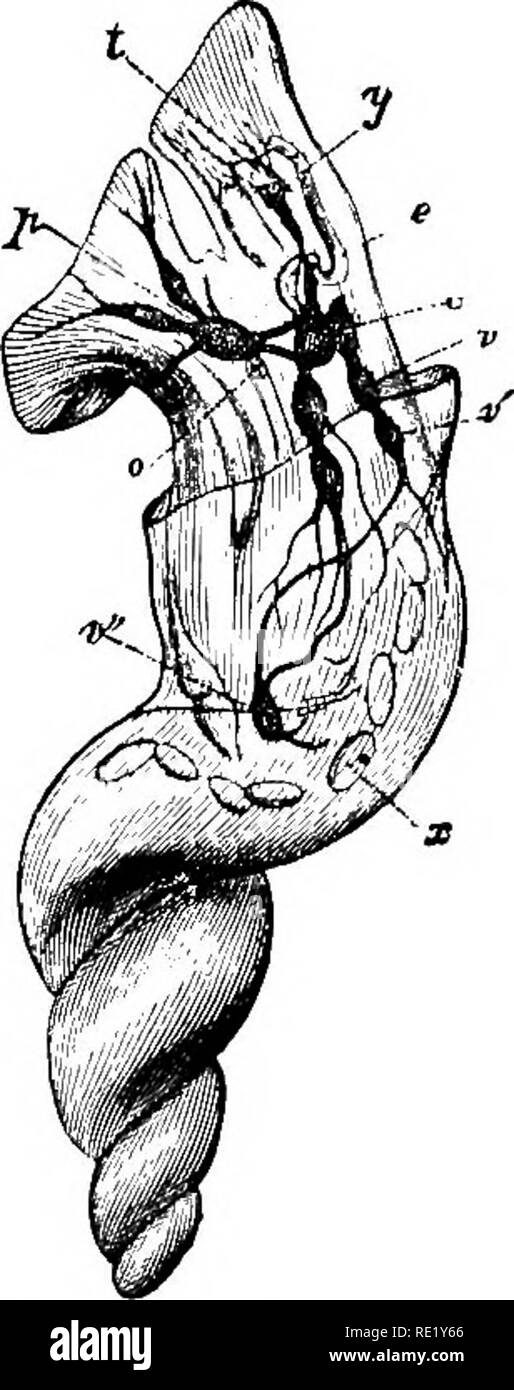. The physiology of domestic animals ... Physiology, Comparative; Veterinary physiology. Pis. 321.—Nervous System of the Star- Fish. (Cams.) Fig. 322.—Nervous System of a Gas- teropod Mollusk. (Perrier.) c, cerebroid ganglia ; p, pedal ganglia ; o, otocysts ; v,vl,vtt, ganglia of second (esophageal collar; I, ten- tacles ; y, ej-es ; X, excrement. and united to the cephalic ganglion and the oesophageal ring (Fig. 322). These ganglia are frequently connected with others whose locations will vary in different species. In the articulata, represented by the insects, annelida, and crusta- ceans, th

Image details
Contributor:
The Book Worm / Alamy Stock PhotoImage ID:
RE1Y66File size:
7.1 MB (298.4 KB Compressed download)Releases:
Model - no | Property - noDo I need a release?Dimensions:
994 x 2512 px | 8.4 x 21.3 cm | 3.3 x 8.4 inches | 300dpiMore information:
This image is a public domain image, which means either that copyright has expired in the image or the copyright holder has waived their copyright. Alamy charges you a fee for access to the high resolution copy of the image.
This image could have imperfections as it’s either historical or reportage.
. The physiology of domestic animals ... Physiology, Comparative; Veterinary physiology. Pis. 321.—Nervous System of the Star- Fish. (Cams.) Fig. 322.—Nervous System of a Gas- teropod Mollusk. (Perrier.) c, cerebroid ganglia ; p, pedal ganglia ; o, otocysts ; v, vl, vtt, ganglia of second (esophageal collar; I, ten- tacles ; y, ej-es ; X, excrement. and united to the cephalic ganglion and the oesophageal ring (Fig. 322). These ganglia are frequently connected with others whose locations will vary in different species. In the articulata, represented by the insects, annelida, and crusta- ceans, the nervous sj'stem has become symmetrical (Fig. 323). The ganglia which compose the nervous system may be arranged in pairs on each side of the median line of the body, each pair corre- sponding to a segment of the body, extending throughout its entire length and united to each other so as to form a longitudinal chain of ganglia, which are connected further by transverse commissures. Sometimes the ganglia consist of a single median row. Usually one of the ganglia is more voluminous than the others, and being, as a rule, located in the anterior extremity of the animal, might be compared to. Please note that these images are extracted from scanned page images that may have been digitally enhanced for readability - coloration and appearance of these illustrations may not perfectly resemble the original work.. Smith, Robert Meade, 1854-. Chicago, A. Eger